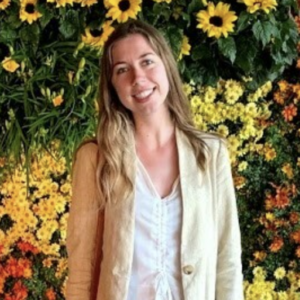From designing buildings for better air quality and social connection to assessing the impact of quality greenspace in a neighborhood, tools to measure health and wellbeing can help communities prioritize how they invest in the built environment.
On Wednesday, November 30, 2022, NLC and the International WELL Building Institute (IWBI) co-hosted a webinar on “Tools to Measure Health & Well-being for Infrastructure Development,” as part of our ongoing partnership to help city leaders improve the health and wellbeing of their communities. Panelists Becky Ofrane, Co-Director of City Health Dashboard at NYU School of Medicine’s Department of Population Health, and Dr. Upali Nanda, Principal and Global Director of Research at the architecture firm HKS, discussed the metrics they use to ensure that investments in the built environment foster better health for users.
Community Spaces are Essential
The panelists emphasized the importance of spaces for community connection. Nanda explained that when measuring social satisfaction, there are different scales at play: prolonged, direct social interaction and watching others engage in that type of interaction. Both are important for a person’s social health and sense of belonging. If a student sees other students socializing, it is a positive marker of being a member of a college community for them, regardless of whether they are directly participating in the interaction. Ofrane added another way that quality community space impacts health: City Health Dashboard data shows that access to greenspace and walkability are inversely correlated with gun homicides and suicides. Ofrane also highlighted research suggesting that every dollar invested in greening vacant lots can save as much as $333 in medical, carceral and other costs.
Collectively, these findings underscore why health metrics need to be used not only within a building but also to look at how development interacts with the broader urban fabric and connects to a community’s public health goals. Whether the spaces between buildings are neglected or well programmed contributes to a neighborhood’s health outcomes.
Connecting Private Development to Broader Public Health Objectives
Developers and designers are typically limited by property lines. City leadership plays a central role in facilitating connections between developers and broader city planning efforts to ensure that initiatives to improve health and wellbeing do not stop at the building’s edge. Connectivity infrastructure should not end as a sidewalk enters private property, just as everyone should have access to greenspace, not only those who have permission to cross through a gate. The health-promoting programming of one building should not be lost as a person walks to the next lot over. “People don’t live their lives in boundaries,” said Nanda. “They go in and out and they travel. They traverse those boundaries every day … but the way in which projects are set up right now, we are not incentivized to think beyond the property lines.”
Urban design guidelines that speak to public health priorities help developers know how their building program can align with community needs and existing initiatives. Developers must also be equipped with the analytical tools to understand the broader health context of the community they are working in before they build. And, though both panelists see quantitative data as crucial for decision-making, Ofrane warned against an overreliance on the quantitative element, noting that capturing community perspectives is equally essential. “Part of it is data and part of it is hearing from people – residents and building users and people who are walking the streets every day,” she remarked.
The COVID-19 pandemic made clear how important thoughtful building design and access to quality outdoor social spaces are for public health. Armed with analytical tools and robust community engagement, city leaders can bolster health by connecting the dots at every level of infrastructure development, from the building to the street, to the neighborhood and beyond.
Watch the full webinar here:










